A Sporting Lifestyle @ Lee Gardens Area
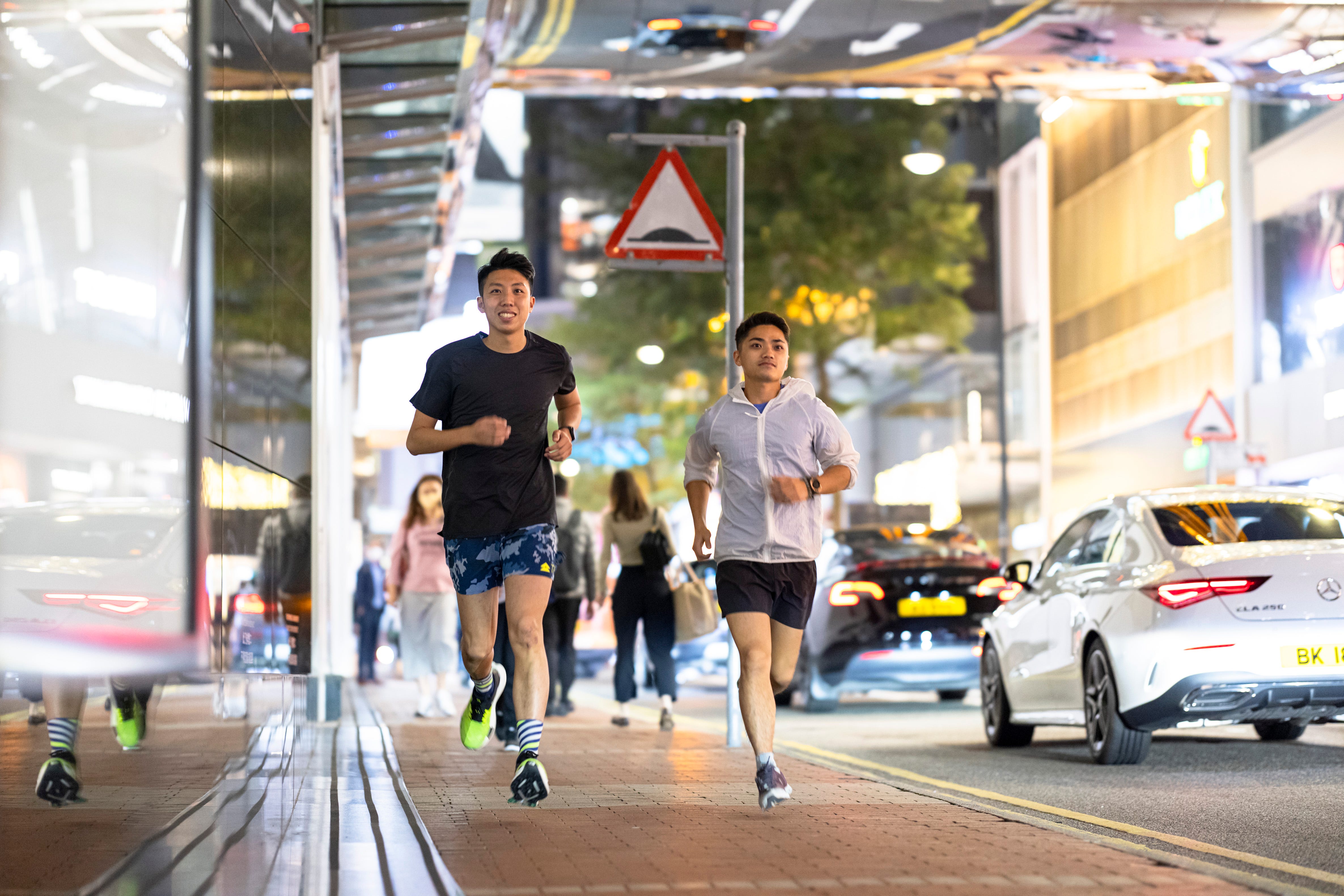

While sports is mostly for personal enjoyment, it also brings vitality to our city and connects people. A group of runners sprinting past bustling street corners, or a touch rugby team practicing on the field is a sight to behold, and their joy can be so infectious that it is felt by everyone around.
Let’s run together
To the uninitiated, running can be boring. Runners, however, know that they have found a secret joy that is best when shared.


Arthur Yu and Alvin Chui got close since they joined the same running group. They each started running for different reasons, but their passion for the sport grew when they started running together. Rather than technical aspects like speed or posture, the two running coaches like to talk more about the joy of running as a team.
Nowadays you may notice see more and more runners on the streets, especially on seaside promenades. What draws them to this “dull” sport? Arthur, who began running seven years ago with the simple objective to exercise more, said: “Running is the easiest sport to get into because you don’t need any gear. That was why I started running. I didn’t enjoy it so much at first. It was just an aerobic exercise to stay healthy.”
He didn’t become very committed until he joined the running club, and then the fun began.
It is true that you don’t need special gears to run. You can start running by putting on your trainers. Arthur and Alvin took an island run in Okinawa four years ago, passing through famous sights like Naha city, Kouri Bridge and the Churaumi Aquarium. It is still the most enduring running experience for them to run across the terrain of Okinawa together.
Alvin brought up the idea with Arthur, who said yes right away. But he joked that he’d terminate the friendship if the trip turned out to be dull. Looking back, it was a trip marked by sweat and laughter. He said: “Usually when you visit Okinawa, you tour the city and visit the aquarium, but this time, we ran 50 miles every day and enjoyed the scenery every step of the way. Every night when we arrived at the hotel, we did laundry and stretching. It was a very special trip.”
A companion in perseverance
Whether it was the uphill run on Route 511 in Okinawa or the treelined Hysan Road, the reason that the two keep running is each other. Arthur said: “Your companion is important since you may run together to set goals, discover new directions, and even join competitions.” Running with others is far more fulfilling, Arthur admitted, and he never found it enjoyable to do it alone.
Friends provide motivation. Arthur said: “You find joy in achieving new targets, enjoying a meal after a run, or going on an overseas trip for a marathon, and exercising itself is enjoyable.”
After graduating from secondary school, Alvin began running with friends, which was how he first became interested in running. He finds days without running rather dull. “Running has changed my social life. Without it, I would simply go home after work. Now I go running with my friends after leaving the office and have dinners with my students after running classes. It is an expanded social circle that I otherwise wouldn’t have.”
It is easy to feel the positive energy that Alvin gets from his running circle. When running with a friend, you can go farther and faster; when running with a group, even more. The camaraderie and mutual encouragement are priceless, along with the satisfaction of reaching the final destination together after a long, exhausting run.


The after-run meals
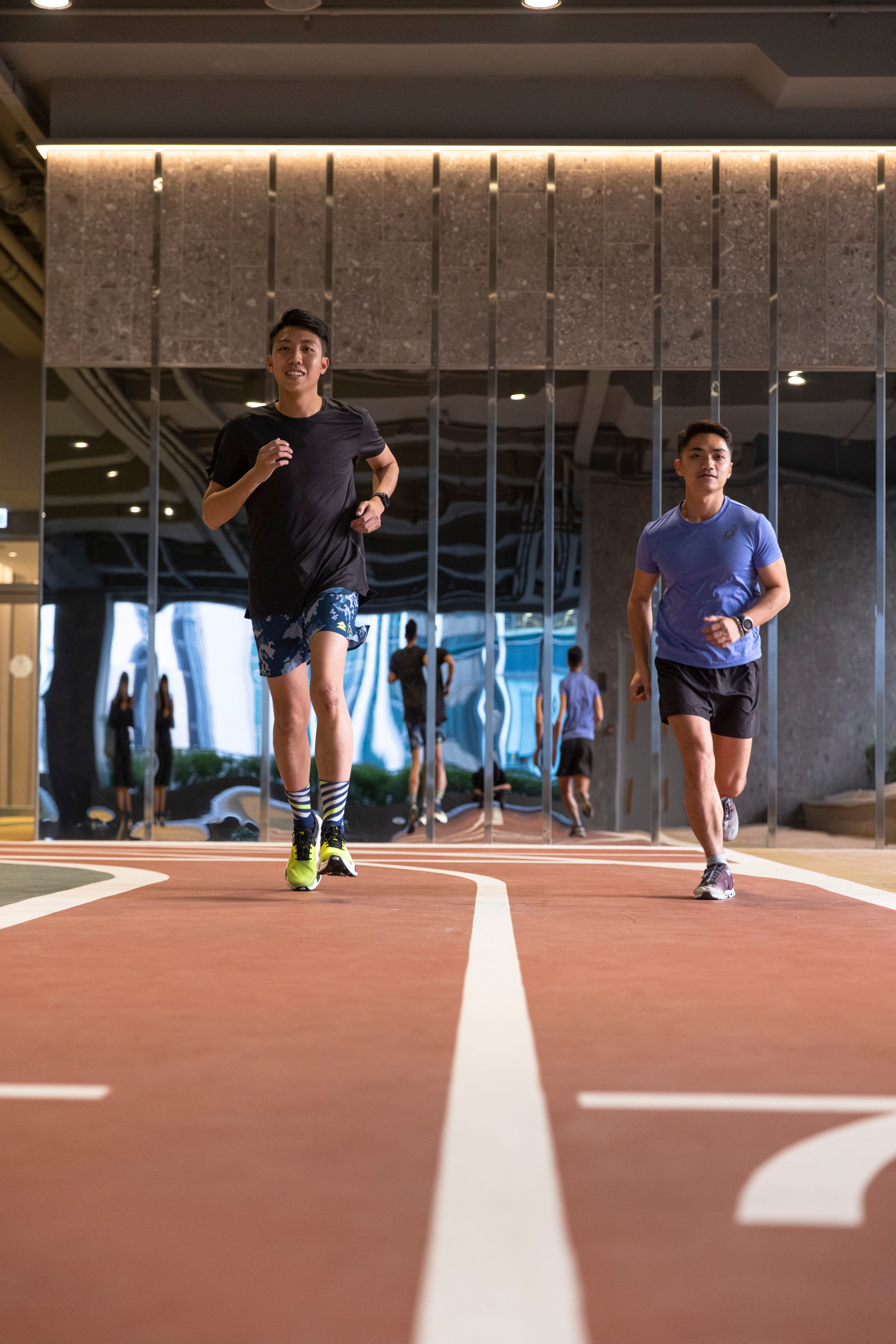

Running on the streets can be fun, so Arthur would lead his class running along Blue Pool Road in Happy Valley into the streets of Causeway Bay.
“It is not about speed when you run on the streets but the chance to enjoy the cityscape. Around the Lee Gardens Area is a place where the old mixes with the new, without much construction work. But most importantly there are many dining options, so we can always look forward to a good meal as the reward afterward!” Some students told Arthur that they stayed in the group mainly for having meals together rather than running itself.
Running is a test of will since it is after all, an endurance sport. Arthur said: “Many people stop because it is tiring, and there is no reason for them to keep going. The truth is running is straightforward. If you run with others, work for a collective goal, and achieve it, then you are happy even if it’s tough.”
Some people forced themselves to start running. Alvin said: “And then they realised that they could get rewarded after the hard work. When you see progress, you keep going. Eventually, running becomes part of your life.”
A running group is a tight-knit community with many different personalities so you can always find someone you get along with. Beginners would find that an easier way to get started. Alvin joked that running is like a friend. “You want to see them after not meeting for a while, but you feel annoyed if you see them too frequently. Sometimes you miss them so you keep seeing them.”
“Sometimes you like to do special things with this friend like going overseas for a marathon, or feeling the urge to bring out your trainers for a run while you are on a leisure trip,” Arthur chimed in.
Sweating together and encouraging each other. You can feel the positive energy exuding from these good buddies as they talk about running and the active life they share.


Candy Cheng: a life with rugby starting in Causeway Bay
Candy Cheng carried with her two rugby balls–a standard 30-cm ball for matches, and a mini one with the logo of Gai Wu Rugby Football Club, which she chairs after retiring from professional rugby in 2019. She was a World Rugby coach and trained youngsters at the Hong Kong Rugby Union. It is obvious that she dedicates her time to giving back to her beloved sport.
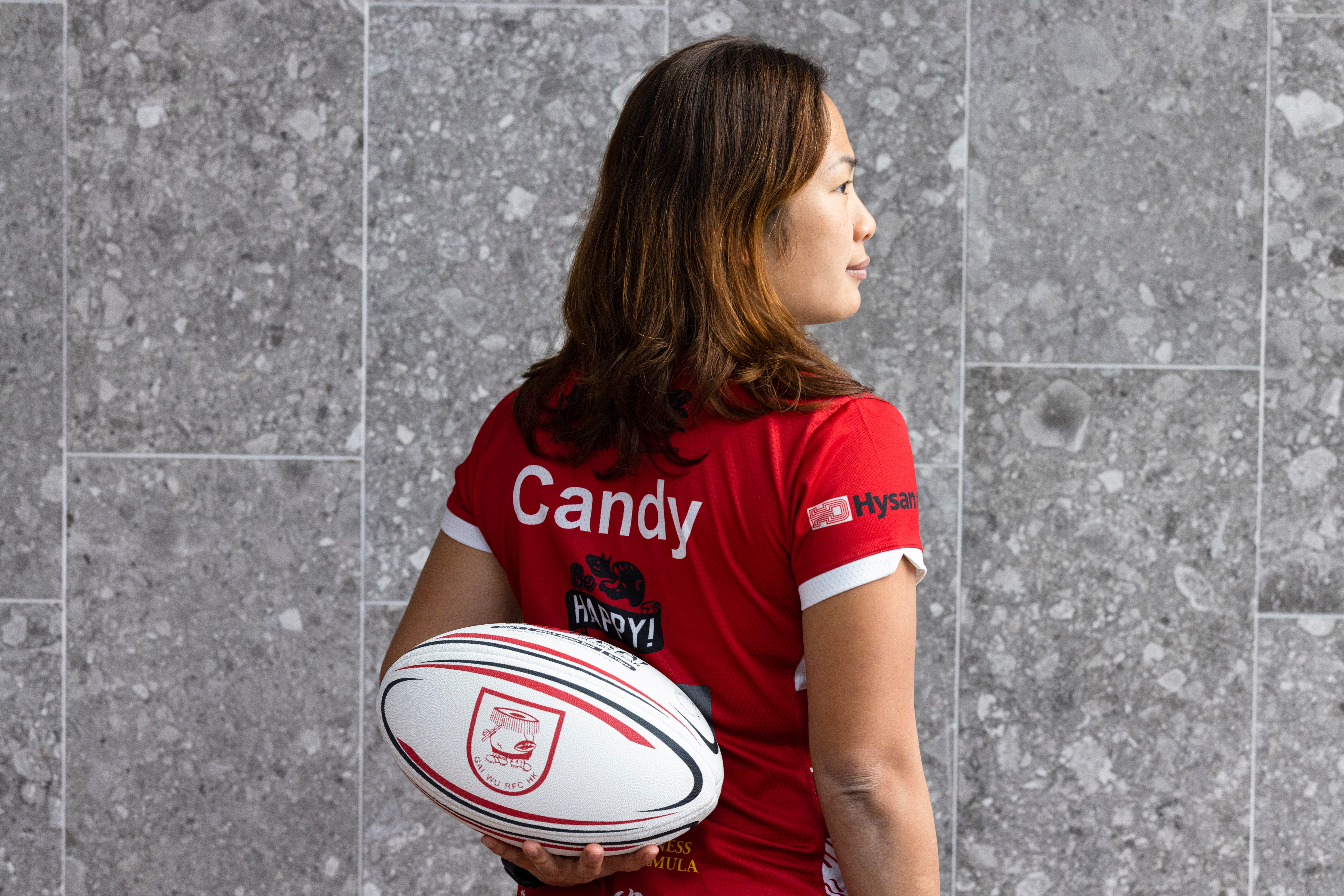

Candy started playing rugby when she came across a summer course back in secondary school. It was quite a novel sport then, but it was cheap to join and she quickly made to the youth team for her good performance. Although she was a young girl, she did not mind the bodily collision that much, but what made it difficult for her was the rule of passing the ball back.
“I would run forward and shout “ball, ball”! But no one was passing to me! I didn’t think the collision was the tough part,” she said.
At the age of 15, she started discovering the joy of rugby. Apart from the speed and adrenaline rush, she found satisfaction in completing an attack or scoring a goal, and in playing in a team. She joked: “I was into swimming before that, so I wasn’t very good at working with others as I just had to focus on myself in the water.”
She had to learn teamwork on the rugby pitch because that was the only way you could execute a strategy. She also found lifelong friends in her teammates. Oftentimes after practicing in Happy Valley, they would hang out in the Lee Gardens Area. The flagship stores at Lee Theatre, the leisurely Pak Sha Road, and the restaurants along Haven Street were their favourite jaunts.
After playing rugby for six months, Candy was selected to the Hong Kong U18 team, where she fulfilled her childhood dream of becoming a professional athlete. “I chose rugby but rugby chose me too.” If it wasn’t for that poster, she wouldn’t have had the chance to get into rugby at age 14. “I wouldn’t be who I am today without rugby,” she said gratefully.
Every successful athletic career comes to an end, but even after her retirement from professional rugby, Candy is still making contributions to the sport. As the chairperson of Gai Wu Rugby Football Club, she is playing an active role in the promotion of rugby by partnering with different organisations. Promoting touch rugby is one of the club’s initiatives.
Touch rugby is a non-contact sport with different rules from conventional rugby. You can stop an opposition attack by gently touching an opponent and shouting “Touch!”. It is more acceptable to kids and beginners because it is safer. It is a game that is easy to get into, without any entry requirements.
“You don’t need to spend a fortune. All you need is a rugby ball, a pair of trainers and suitable exercise clothing. You don’t need something like a sailing boat and you can play anywhere,” explained Candy.


Chan Lap-ting: a team spirit beyond the competition
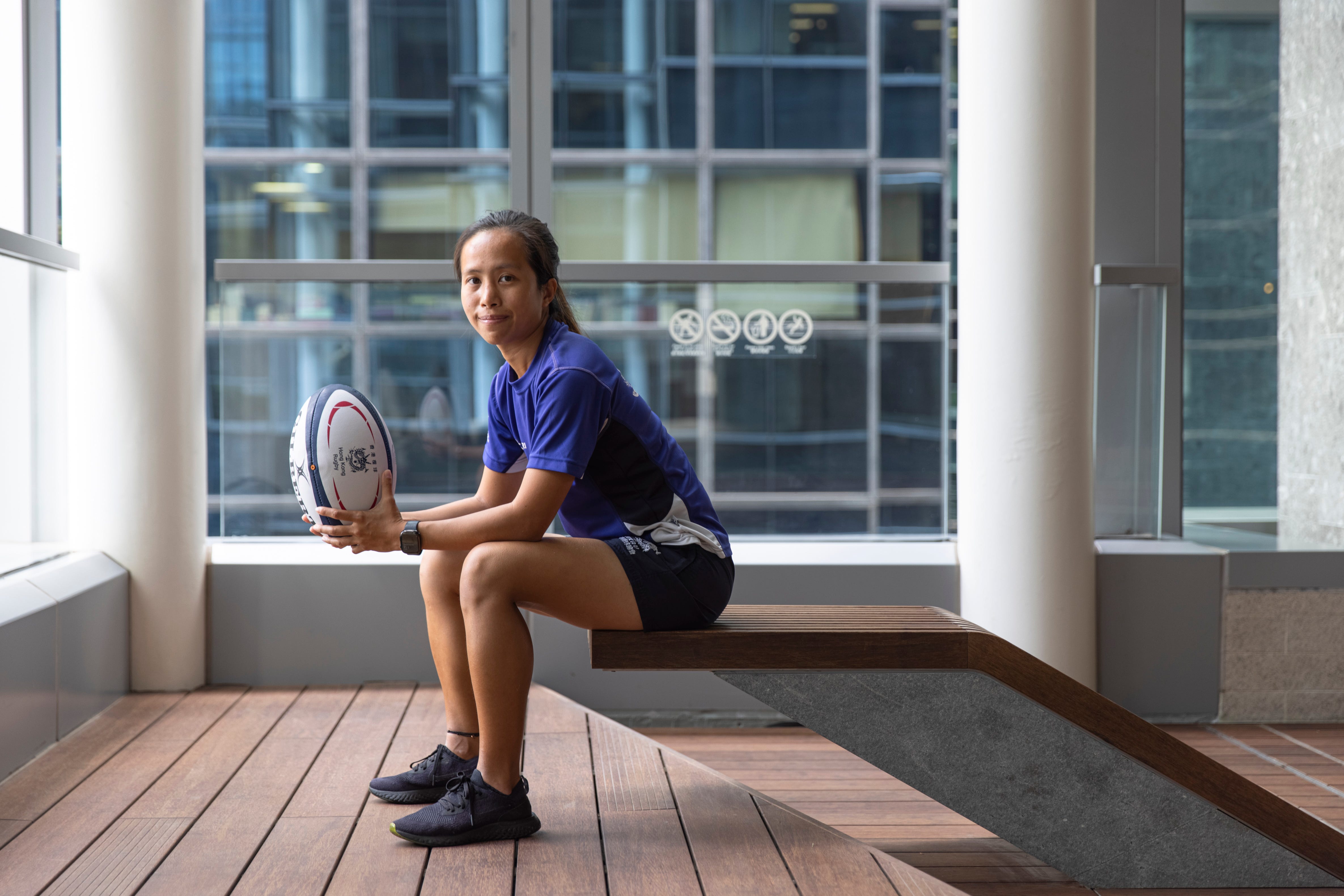

Chan Lap-ting, coach of the Hong Kong Rugby Union, got into rugby when she was at the university. She was not athletic to begin with and was hesitant when her friends invited her to a game of rugby which she thought was full of hard-hitting. “I knew nothing and it was a contact sport. But my friend reassured me that there was nothing to worry about and it would be fine as long as I could tell left from right. That was how I started.”
But you also have to tell back from the front. Just like Candy did, when Lap-ting first started playing, she would instinctively rush forward and forget that in rugby, you have to pass to the back. But soon she got the hang of it and found her place in the team.
Standing at 1.5m, she is small for rugby. “I am small so I don’t have any advantage playing other sports. But in rugby, you can always find your position whether you are big or small.” Lap-ting is #9 in a rugby team of 15, the halfback who leads the attack from the back and is typically the smallest player in the team.
Her petite size may seem a disadvantage but it is actually the opposite. She said: “Our coach would say that you could still tackle even if you are very small. How? A small person is like a stone that an opponent can trip over. It is not about force.”
Lap-tung believes that rugby is for people of different sizes, as long as they know their own strength and play with good technique. Touch rugby is an easy entry point for people to start enjoying rugby. “It is low risk for beginners and children. It is about agility and responsiveness rather than collision. It is suitable for everyone.”
She teaches touch rugby in primary schools and finds that children can pick up the game quickly. “There are techniques for them to defeat opponents who are more advantageous, like forcing them to run backwards after an attack is stopped. Even good runners can’t run that fast going backwards. Children are happy to discover tactics that can help them win.”
The training and match grounds of Gai Wu are both in Happy Valley, as are the rugby classes. For Lap-ting who grew up with her rugby teams, she has spent a lot of time with them in the nearby Lee Gardens Area where she feels a sense of belonging. Not surprisingly, four rugby associations are located in Causeway Bay, and the Hong Kong Sevens is held nearby. She said: “Lee Gardens Area is a part of rugby.”
On the pitch, Lap-ting enjoys sweating with her teammates, training both the mind and body while overcoming difficulties. Off the pitch, she would hang out with her team after training and matches in her “home ground” of Causeway Bay and near Yun Ping Road. “The joy of rugby lies in making friends with teammates with whom you work hard together. There is satisfaction in every goal. Afterwards, we would go out to eat and have fun. That’s itself a huge motivation!”
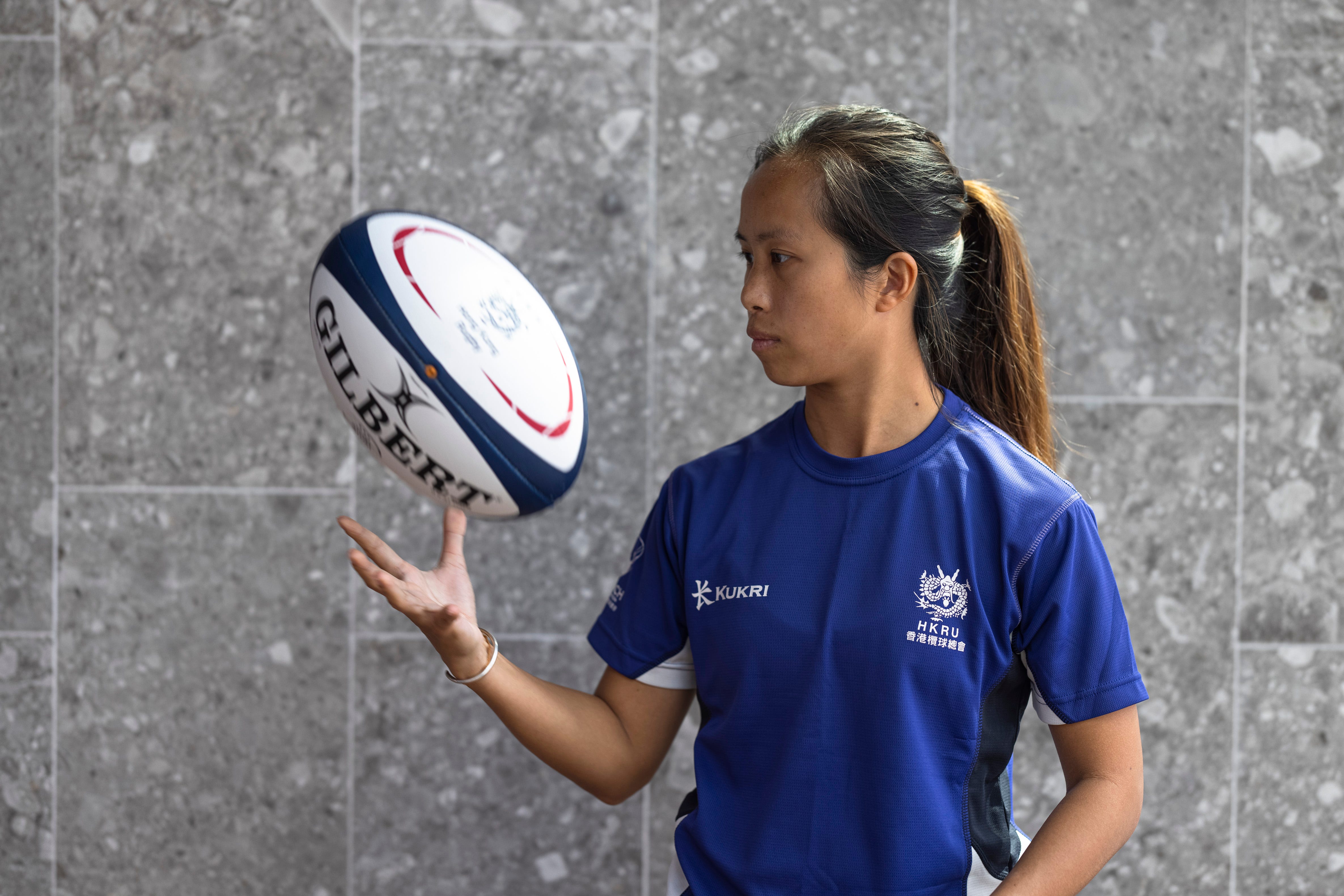

She hopes that playing rugby would help kids develop solid techniques as well as team spirit. “Ideally, they would continue to play rugby, and if possible, reach the highest level. But not everyone plays to win championships. Some people play for exercise and relaxation. So ultimately I hope they will make friends and learn respect, partnership and perseverance. These are the values that they can apply in their lives.”
Rugby connecting the city


Rocky Chow, Chief Community Officer of the Hong Kong Rugby Union, is a well-known face in the local rugby circle who actively promotes the sport. He admitted that people usually associate rugby with the carnival-like atmosphere brought by the Hong Kong Sevens to the Lee Gardens Area and nearby neighbourhoods.
Contrary to the impression that it is largely an expat activity, 60% of players in Hong Kong are locals and it is more than just a party.
Rocky said that it is important to develop the next generation of rugby players in the community, and touch rugby is the best entry point for children.
“Touch rugby requires speed and agility, making it great for child development. Many people are put off by collision so touch rugby is a great starting point.” he explained. Hong Kong has over 20 touch rugby teams. The Hong Kong Rugby Union organises three beginner classes every year in different locations. He is happy to work with Hysan Development to promote rugby in the Lee Gardens Area as a way to connect the community.
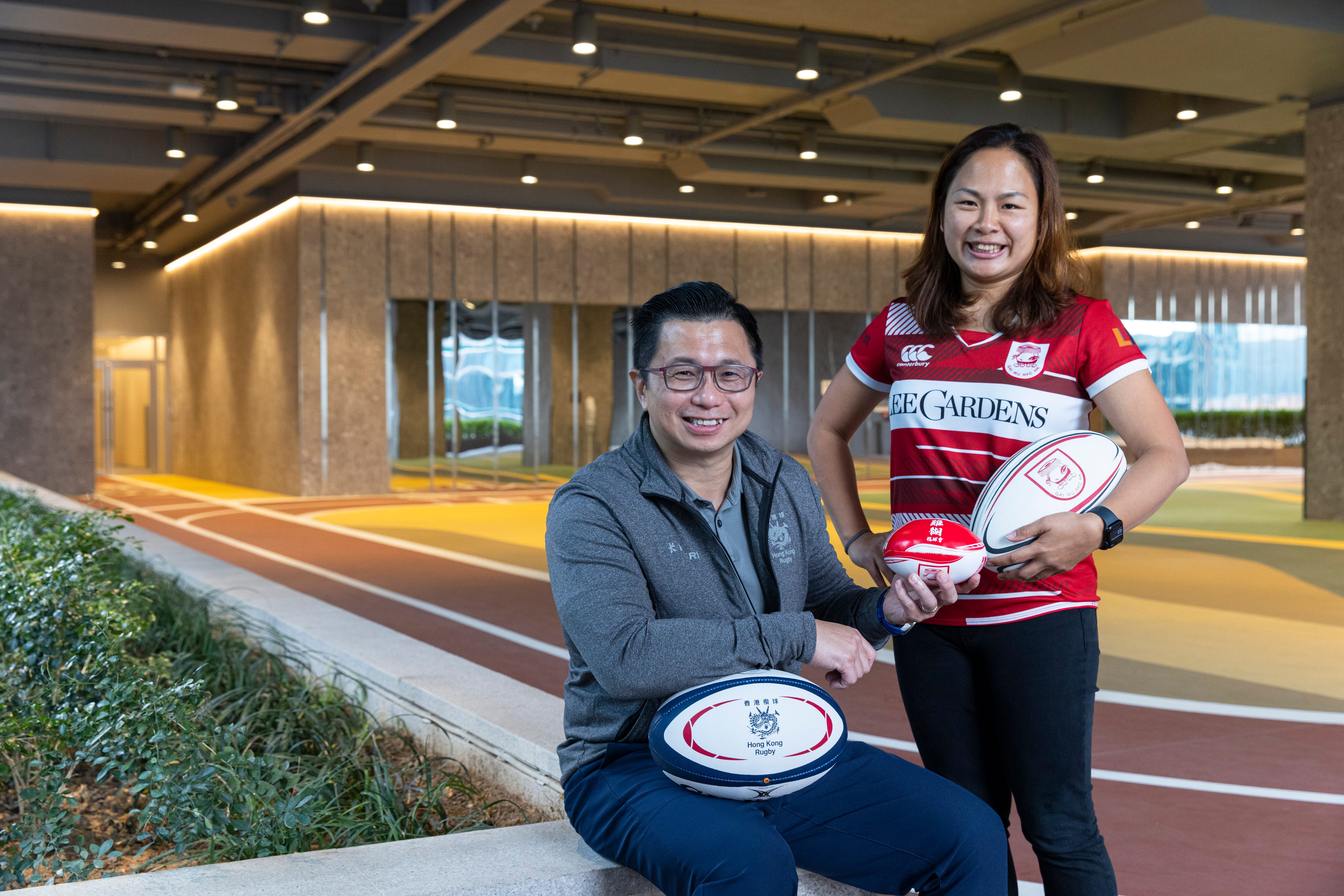

It’s easier than you might imagine to take the first step toward opening a new life chapter in your life. Even a professional athlete can start hers by looking at a poster for a summer course. Are you ready for your first step?
